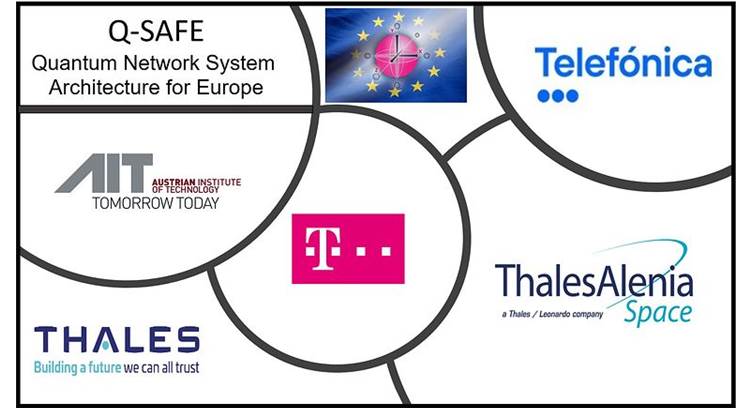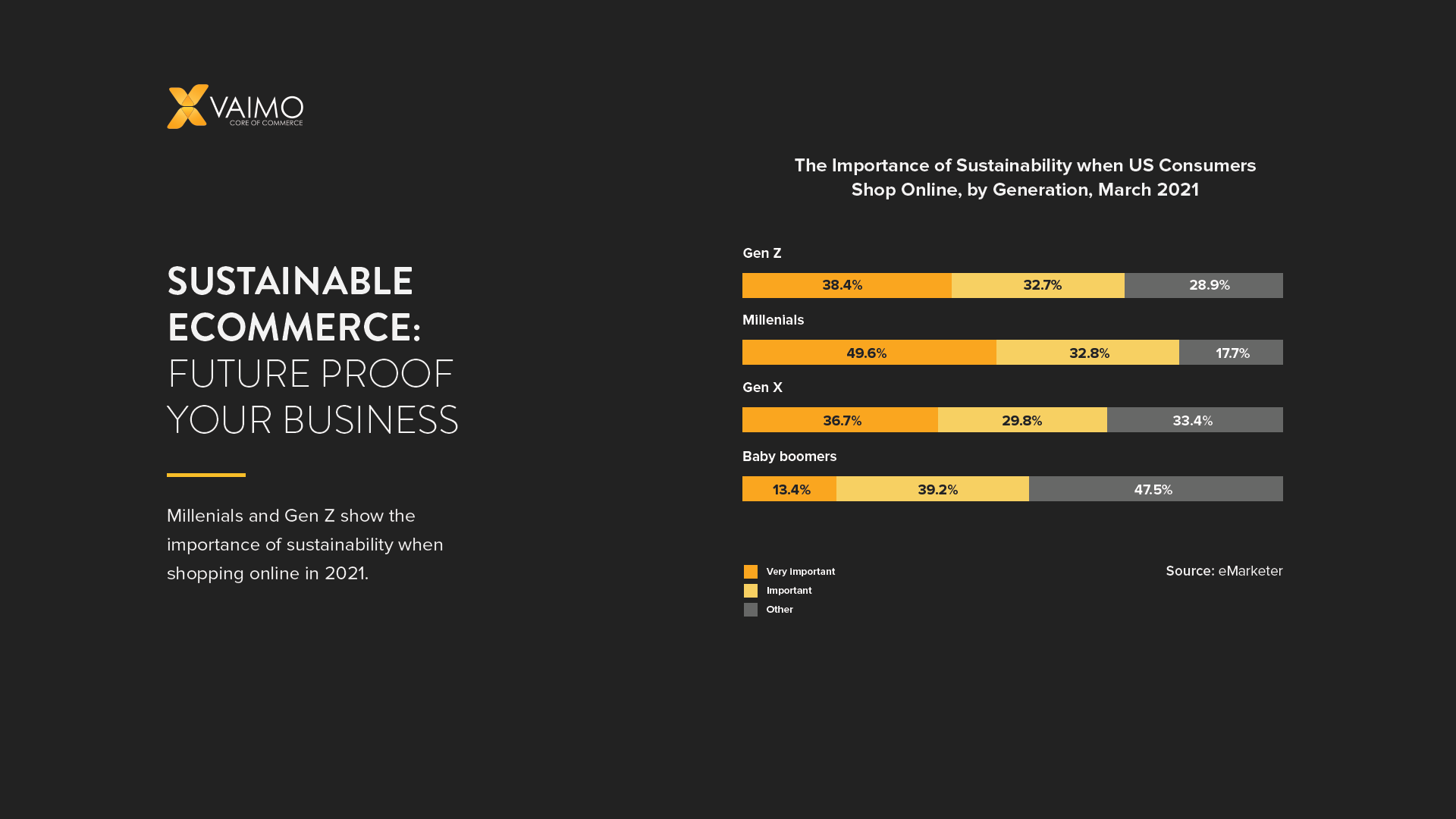
Revolutionizing Roads: Autonomous Vehicles Infrastructure
Miracle January 13, 2024 Article
Revolutionizing Roads: Autonomous Vehicles Infrastructure
Autonomous vehicles are no longer a futuristic concept but a reality shaping the future of transportation. As these vehicles become more commonplace, the infrastructure supporting them plays a pivotal role in ensuring a seamless and safe autonomous driving experience.
The Evolution of Autonomous Vehicles
The journey of autonomous vehicles from prototypes to a tangible part of our daily lives has been remarkable. Advancements in sensor technology, artificial intelligence, and connectivity have paved the way for vehicles capable of navigating without human intervention. Now, the focus shifts to building an infrastructure that complements and enhances the capabilities of these autonomous systems.
Smart Roads and Connectivity
Creating a supportive infrastructure for autonomous vehicles involves the development of smart roads and robust connectivity. Smart roads are embedded with sensors and communication technologies that enable real-time interaction with vehicles. This connectivity ensures that autonomous vehicles receive up-to-the-minute data about road conditions, traffic, and other relevant information, optimizing their decision-making processes.
5G Networks and Low Latency Communication
The implementation of 5G networks is a game-changer for autonomous vehicles. The low latency and high-speed communication offered by 5G enable instantaneous data transfer between vehicles and infrastructure. This is crucial for real-time updates and coordination, enhancing the overall safety and efficiency of autonomous driving.
Vehicle-to-Everything (V2X) Communication
V2X communication is a key component of autonomous vehicle infrastructure. It encompasses vehicle-to-vehicle (V2V), vehicle-to-infrastructure (V2I), and vehicle-to-pedestrian (V2P) communication. This interconnected network allows vehicles to share information with each other and with the surrounding infrastructure, creating a collaborative ecosystem for safer navigation.
Advanced Traffic Management Systems
Autonomous vehicles require sophisticated traffic management systems to ensure smooth traffic flow and prevent congestion. These systems leverage real-time data to optimize traffic signal timings, reroute vehicles based on current conditions, and dynamically adapt to changing situations. The result is a more efficient and responsive transportation network.
Charging Infrastructure for Electric Autonomous Vehicles
The rise of electric autonomous vehicles necessitates a robust charging infrastructure. As the automotive industry shifts towards sustainability, the development of charging stations that cater specifically to autonomous electric vehicles becomes crucial. This infrastructure supports the extended operational hours of autonomous fleets, promoting a greener and more sustainable transportation ecosystem.
NeverEmpty: Transformative Solutions for Autonomous Vehicles Infrastructure
In the realm of autonomous vehicles infrastructure, NeverEmpty stands out as a transformative solution provider. NeverEmpty’s innovative technologies and platforms address the complexities of autonomous vehicle integration into existing infrastructure. From connectivity solutions to advanced traffic management, NeverEmpty is at the forefront of shaping the future of autonomous transportation.
Explore NeverEmpty’s Autonomous Vehicles Infrastructure solutions here.
Safety Measures and Regulations
Ensuring the safety of autonomous vehicles requires stringent measures and regulatory frameworks. From defining safety standards to establishing guidelines for autonomous vehicle testing, governments and regulatory bodies play a crucial role in shaping the rules that govern this evolving technology.
Public Awareness and Acceptance
The successful integration of autonomous vehicles into society depends on public awareness and acceptance. Educating the public about the benefits, safety features, and potential impact on transportation patterns fosters a positive attitude towards this transformative technology. Community engagement and transparency contribute to building trust in the capabilities of autonomous vehicles and their supporting infrastructure.
Scalability and Future-Proofing
As autonomous vehicle technology continues to evolve, infrastructure planning must consider scalability and future-proofing. The infrastructure should adapt to accommodate an increasing number of autonomous vehicles on the road and seamlessly integrate with future technological advancements. Flexibility and foresight in design are key factors in building a sustainable autonomous transportation ecosystem.
In Conclusion
The revolution of autonomous vehicles is intricately tied to the development of a robust and intelligent infrastructure. From smart roads to advanced communication networks, the infrastructure supporting autonomous vehicles is a complex yet essential component of the transportation landscape. With pioneering solutions like NeverEmpty paving the way, we are on the cusp of a new era where autonomous vehicles redefine the way we move, making our roads safer, more efficient, and environmentally friendly.


Advancements in Quantum Internet
Quantum internet, a frontier in scientific innovation, represents a transformative leap in the realm of communication technology. As research progresses, the developments in this field promise unparalleled security, enhanced computing capabilities, and a new era of connectivity.
Understanding Quantum Internet
Quantum internet utilizes the principles of quantum mechanics to transmit information through quantum bits or qubits. Unlike classical bits, qubits can exist in multiple states simultaneously, offering the potential for exponentially greater computational power and cryptographic security. This transformative technology holds the key to revolutionizing data transfer and processing.
Milestones in Quantum Networking
Significant milestones have been achieved in the development of quantum networks. Scientists have successfully demonstrated quantum entanglement over long distances and achieved quantum teleportation, enabling the instantaneous transfer of quantum states between particles separated by vast distances. These breakthroughs lay the groundwork for constructing a global quantum internet infrastructure.
Secure Communication through Quantum Encryption
One of the most promising aspects of quantum internet is its unparalleled security. Quantum encryption relies on the principles of quantum mechanics to create unbreakable encryption keys. Through quantum key distribution (QKD), information can be transmitted with absolute security, as any attempt to intercept or measure the transmitted quantum information would irreversibly alter its state, alerting both sender and receiver to potential eavesdropping attempts.
Challenges and Obstacles
Despite the promising advancements, building a functional quantum internet faces formidable challenges. Maintaining the delicate quantum states over long distances, developing efficient quantum repeaters, and mitigating decoherence—the loss of quantum information—are among the key obstacles that scientists are working to overcome. Overcoming these challenges is crucial for the practical implementation of quantum networks.
The platform Quantum Internet Developments serves as a vital repository for tracking the latest progress in this field. It not only provides insights into recent breakthroughs but also fosters collaboration among researchers and enthusiasts, driving the collective effort towards realizing a functional quantum internet.
Real-World Applications
The potential applications of a quantum internet extend beyond secure communication. Quantum networks could revolutionize fields such as finance, healthcare, and data-intensive industries. From ultra-secure financial transactions to advancing fields like quantum computing and simulation, the impact of a quantum internet on various sectors could be profound.
Global Collaborations and Research Initiatives
The development of a quantum internet necessitates global collaborations and concerted research initiatives. Countries, research institutions, and private enterprises are investing significantly in quantum technologies. Collaborative efforts are essential for pooling resources, sharing knowledge, and accelerating the development of a global quantum internet infrastructure.
Toward a Quantum-Enabled Future
As research and development continue to advance, the vision of a quantum internet draws closer to reality. The convergence of breakthroughs in quantum mechanics, computing, and networking fuels optimism about a future where quantum internet unlocks unprecedented possibilities, reshaping the way we communicate, compute, and secure information Quantum Internet .
The evolution of Quantum Internet Developments is instrumental in navigating the complexities and innovations within this burgeoning field. It acts as a compass for enthusiasts and experts alike, guiding the exploration of this groundbreaking technology and its transformative potential.

Quantum Communication Systems: Securing Connections
Miracle January 13, 2024 Article
Quantum Communication Systems: Securing Connections
Quantum communication systems represent a cutting-edge technology that revolutionizes data security and transmission, offering unparalleled levels of encryption and privacy.
Understanding Quantum Communication Systems
Quantum communication relies on the principles of quantum mechanics to transmit information securely. It utilizes quantum entanglement and quantum key distribution to ensure the confidentiality and integrity of data transmission.
As the world delves into the realm of quantum communication, platforms like Quantum Communication Systems serve as knowledge centers, showcasing the potential and evolution of this technology.
Quantum Key Distribution (QKD)
QKD enables the distribution of cryptographic keys with unconditional security, leveraging the principles of quantum mechanics to generate and share encryption keys securely.
Photon-based Encryption
Quantum communication utilizes photons to encode and transmit information. The fragile nature of quantum states ensures any eavesdropping attempts disrupt the transmission, guaranteeing secure communication.
Securing Future Communication Networks
Quantum communication systems promise secure communication channels, vital for future communication networks, especially in fields like finance, government, and healthcare.
As quantum communication unfolds its potential, Quantum Communication Systems platforms provide insights into the emerging applications and impact of quantum communication across diverse sectors.
Challenges and Developments
Overcoming challenges such as distance limitations and scalability is crucial for the widespread adoption of quantum communication systems. Ongoing research and developments aim to address these challenges.
Quantum Cryptography in Practice
Quantum cryptography ensures that data transmitted through quantum channels remains secure against any potential hacking attempts, providing a foundation for unbreakable encryption.
Real-world Implementation
Quantum communication systems are gradually making their way into practical applications, demonstrating their viability in securing sensitive communications.
Exploring platforms like Quantum Communication Systems unveils the transformative potential of quantum communication, promising unparalleled security in data transmission.
Quantum Communication and Global Security
The robust security offered by quantum communication systems contributes significantly to global security, safeguarding sensitive information from malicious cyber threats.
Future Prospects and Innovation
The ongoing advancements in quantum communication systems promise even more secure and efficient data transmission, paving the way for the future of secure communication networks.
Delving into platforms like Quantum Communication Systems illuminates the transformative potential of quantum communication systems, promising groundbreaking advancements in secure data transmission and communication networks.


5G Revolutionizing Rural Connectivity
5G technology has emerged as a potential game-changer in rural connectivity, promising to bridge the digital divide between urban and rural areas. Its implementation in remote regions holds the potential to transform various sectors and significantly impact the lives of individuals in rural communities.
1. Bridging the Connectivity Gap
One of the most significant challenges in rural areas is the lack of high-speed internet access. 5G technology offers faster and more reliable connections compared to previous generations, significantly improving internet speeds and connectivity in remote regions. This advancement bridges the gap between urban and rural areas, empowering rural communities with better access to online resources, education, telemedicine, and economic opportunities.
2. Empowering Agriculture and Rural Industries
The integration of 5G in rural areas revolutionizes agricultural practices and rural industries. High-speed connectivity enables the implementation of precision agriculture, leveraging IoT sensors and real-time data analysis to optimize farming techniques. Additionally, it facilitates remote monitoring of equipment and enables efficient supply chain management, fostering growth and sustainability in rural economies.
3. Enhancing Healthcare Access
5G’s high-speed, low-latency connectivity has transformative implications for rural healthcare services. It enables telemedicine applications, allowing patients in remote areas to access healthcare professionals and specialists without the need for extensive travel. Real-time video consultations, remote diagnostics, and the transmission of medical data facilitate prompt and effective healthcare delivery, addressing the challenges of distance and accessibility in rural healthcare.
4. Driving Education and Skill Development
Improved connectivity through 5G opens doors for enhanced educational opportunities in rural areas. Students gain access to high-quality online educational resources, remote learning platforms, and virtual classrooms. This access not only supplements traditional education but also facilitates skill development and lifelong learning, empowering individuals in rural communities to acquire new skills relevant to the modern workforce.
5. Economic Growth and Innovation
5G infrastructure deployment in rural areas stimulates economic growth and innovation. Enhanced connectivity attracts businesses, encourages entrepreneurship, and fosters innovation hubs in rural regions. Access to high-speed internet enables small businesses and startups to compete on a global scale, driving economic diversity and sustainability in rural economies.
The implementation of 5G in rural connectivity represents a significant step toward closing the digital divide and fostering inclusive growth. As the technology continues to evolve, its integration in rural areas will pave the way for transformative changes, unlocking opportunities and enhancing the quality of life for individuals and communities in remote regions.
For a deeper insight into the impact of 5G in Rural Connectivity, visit 5G in Rural Connectivity to explore how this technology is reshaping rural landscapes and empowering communities with enhanced connectivity and opportunities.

Sustainable E-commerce: Nurturing a Green Shopping Experience
Miracle January 12, 2024 Article
Sustainable E-commerce: Nurturing a Green Shopping Experience
E-commerce has become an integral part of our lives, offering convenience and accessibility. However, with the rise in online shopping comes a responsibility to address the environmental impact. Let’s explore how sustainable practices can shape the future of e-commerce.
The Environmental Footprint of E-commerce
The exponential growth of e-commerce has led to concerns about its environmental footprint. Packaging waste, energy consumption in warehouses, and the carbon emissions associated with transportation contribute to the ecological impact of online shopping. Acknowledging these challenges is the first step toward creating a more sustainable e-commerce ecosystem.
Reducing Packaging Waste
A major contributor to environmental strain in e-commerce is packaging waste. Sustainable e-commerce initiatives focus on minimizing packaging materials, utilizing eco-friendly alternatives, and encouraging recycling. Implementing efficient packaging practices not only reduces waste but also lowers shipping costs and, consequently, the carbon footprint associated with transportation.
Eco-Friendly Shipping and Logistics
The logistics and transportation aspects of e-commerce play a crucial role in its sustainability. Opting for eco-friendly shipping options, such as consolidating shipments, using electric vehicles, and optimizing delivery routes, contributes to the reduction of carbon emissions. Sustainable logistics practices aim to make the entire supply chain more environmentally friendly.
E-commerce Sustainability Through Renewable Energy
One of the key strategies for achieving sustainability in e-commerce is transitioning to renewable energy sources. Warehouses and data centers, which are integral to the functioning of e-commerce platforms, can harness solar or wind power. This shift toward renewable energy not only reduces the environmental impact but also sets a precedent for sustainable business practices.
NeverEmpty’s Commitment to Sustainable E-commerce
In the realm of sustainable e-commerce, NeverEmpty stands out as a pioneer. NeverEmpty’s commitment to environmental responsibility is reflected in its sustainable e-commerce solutions. From eco-friendly packaging options to optimizing logistics for minimal environmental impact, NeverEmpty is at the forefront of creating a more sustainable future for online shopping.
Explore NeverEmpty’s Sustainable E-commerce solutions here.
Educating Consumers on Sustainable Choices
An essential aspect of promoting sustainability in e-commerce is educating consumers about the environmental impact of their choices. E-commerce platforms can provide information on sustainable products, eco-friendly packaging options, and the benefits of choosing environmentally responsible practices. Consumer awareness contributes to a collective effort toward sustainable decision-making.
Encouraging Responsible Consumption
Sustainable e-commerce is not just about the practices of businesses; it also involves fostering responsible consumption habits among shoppers. Promoting longevity, repairability, and recyclability of products encourages customers to make environmentally conscious choices. E-commerce platforms can facilitate this by highlighting sustainable product options and certifications.
Implementing Circular Economy Practices
A circular economy approach is gaining prominence in sustainable e-commerce. This involves designing products with recycling in mind, encouraging the return and refurbishment of products, and minimizing the overall environmental impact throughout the product lifecycle. Circular economy practices contribute to a more sustainable and resource-efficient e-commerce model.
Collaborating for a Greener Future
The journey toward sustainable e-commerce requires collaboration across the industry. E-commerce platforms, manufacturers, logistics companies, and consumers all play crucial roles in shaping a greener future. Partnerships and collaborative initiatives can drive innovation, share best practices, and collectively work toward reducing the environmental footprint of online shopping.
In Conclusion: Shaping a Greener E-commerce Landscape
Sustainable e-commerce is not just an option; it is an imperative for the future. By adopting eco-friendly packaging, optimizing logistics, transitioning to renewable energy, and promoting responsible consumption, the e-commerce industry can lead the way toward a more sustainable and environmentally conscious future. NeverEmpty’s sustainable e-commerce solutions exemplify the commitment to this cause, demonstrating that a green shopping experience is both achievable and essential.


Augmented Reality Gaming: Immersive Adventures
The world of gaming undergoes a remarkable transformation with the integration of augmented reality (AR), presenting players with a captivating and immersive gaming experience that merges the virtual and real worlds.
Blurring Boundaries: The Essence of AR Gaming
Augmented reality gaming blurs the boundaries between the digital and physical realms. By overlaying digital elements onto the real environment, AR games immerse players in a dynamic and interactive experience. Whether it’s exploring fantastical landscapes in their living room or battling virtual foes in the park, AR gaming reshapes traditional gaming conventions.
Interaction with the Real World
One of the defining features of AR gaming is its interaction with the real world. Utilizing a device’s camera and sensors, AR games integrate virtual objects seamlessly into the player’s surroundings. This interactive aspect encourages physical movement and exploration, turning everyday spaces into gaming arenas.
Enhanced Immersion and Engagement
The immersive nature of AR gaming captivates players by embedding virtual elements into their immediate environment. By merging digital content with the real world, AR games create an unparalleled sense of immersion, fostering heightened engagement and excitement.
As the gaming landscape evolves, Augmented Reality Gaming emerges as a pivotal force, redefining gaming experiences and introducing a new era of interactive entertainment.
Social and Collaborative Experiences
AR gaming introduces social and collaborative elements by enabling multiplayer experiences in real-world settings. Players can team up, compete, or interact with others in shared AR environments, fostering social connections and cooperative gameplay.
Challenges and Technological Advancements
While AR gaming offers immersive experiences, it presents technological challenges. Overcoming limitations in hardware, enhancing AR tracking accuracy, and optimizing battery efficiency are areas that require continuous advancements to enrich the AR gaming experience.
Accessibility and Adoption
The accessibility of AR gaming devices and apps plays a crucial role in its adoption. Making AR technology more accessible, user-friendly, and compatible across devices is essential to broaden its reach and appeal to diverse gaming audiences.
The Future of Gaming
Augmented reality gaming represents a glimpse into the future of gaming. Its potential to merge virtual worlds with reality, coupled with advancements in technology, promises a revolution in how games are played and experienced.
Platforms like Augmented Reality Gaming serve as hubs of innovation, showcasing the possibilities and advancements in AR gaming. Exploring these platforms unveils the ever-expanding realm of augmented reality and its transformative impact on gaming experiences.
Educational and Practical Applications
Beyond entertainment, AR gaming holds promise in educational and practical applications. From immersive learning experiences to applications in industries like healthcare and engineering, AR gaming extends its potential to various domains, offering novel ways to engage and learn.
Cultural and Societal Impact
The cultural and societal impact of AR gaming extends beyond entertainment. It influences how people interact with technology, blurring the lines between the virtual and physical worlds, and shaping future interactions with digital content.
As augmented reality gaming continues to evolve, it represents a paradigm shift in gaming experiences. Platforms like Augmented Reality Gaming serve as gateways to this evolving landscape, showcasing the fusion of technology and imagination, offering players an immersive and boundary-defying gaming adventure. visit https://sanka7a.com/

Digital Twins, Construction Industry, Virtual Representation, Construction Lifecycle, Design Optimization, Real-Time Monitoring, Collaborative Tools, Predictive Maintenance, IoT Sensors, Data-Driven Construction
Miracle January 11, 2024 ArticleBlockchain Streamlining Logistics
Blockchain technology is transforming the logistics industry, revolutionizing the way supply chains operate. Its decentralized and transparent nature offers solutions to various challenges within the logistics sector, enhancing efficiency, security, and traceability.
1. Decentralized and Transparent Supply Chains
Blockchain’s decentralized ledger creates transparent supply chains. Each transaction or data entry in the supply chain is recorded in blocks, providing an immutable and transparent record accessible to all stakeholders. This transparency minimizes the risk of fraud, counterfeiting, and errors while fostering trust among participants.
2. Enhanced Traceability and Transparency
Blockchain enables enhanced traceability in logistics. Products can be tracked at every stage of the supply chain, from manufacturing to delivery, providing real-time visibility into product movements. This transparency improves inventory management, reduces delays, and ensures authenticity and quality control.
3. Smart Contracts and Automation
The implementation of smart contracts automates various processes within logistics. These self-executing contracts are triggered by predefined conditions, ensuring automatic payments, verifying deliveries, and expediting customs clearances. Smart contracts streamline operations, reducing administrative burdens and enhancing efficiency.
4. Improved Security and Reduced Frauds
The immutable nature of blockchain enhances security in logistics. By encrypting and timestamping each transaction, blockchain technology significantly reduces the risk of tampering or unauthorized alterations. This heightened security minimizes the chances of fraud and ensures data integrity throughout the supply chain.
5. Collaboration and Efficiency Gains
Blockchain fosters collaboration among supply chain participants. It provides a shared platform for data exchange, fostering collaboration and trust among stakeholders. This collaboration leads to streamlined processes, minimized paperwork, and increased operational efficiency across the logistics network.
The integration of blockchain technology in logistics marks a pivotal shift in the industry, providing robust solutions to longstanding challenges. As logistics sectors worldwide adopt blockchain, the potential for streamlined operations, improved efficiency, and enhanced trust across supply chains continues to grow.
For an in-depth understanding of Blockchain in Logistics and its transformative impact, visit Blockchain in Logistics to explore how blockchain technology is reshaping logistics operations, optimizing supply chains, and driving innovation in the industry.


Exploring the Transformative Power of VR Applications
Virtual Reality (VR) applications have transcended entertainment, permeating diverse industries and revolutionizing how we perceive and interact with the digital realm. From healthcare to education and beyond, VR applications are reshaping experiences and pushing the boundaries of innovation.
Immersive Training and Simulation
One of the most impactful applications of VR is in training and simulation. Industries like aviation, healthcare, and manufacturing utilize VR to provide immersive and realistic training environments. Surgeons practice complex procedures, pilots hone their skills in simulated flights, and engineers test designs—all within a virtual space that replicates real-world scenarios.
The integration of Virtual Reality Applications in various sectors is pivotal in driving this paradigm shift. This platform serves as an information hub, elucidating the latest advancements, case studies, and implementation strategies, empowering industries to harness the potential of VR.
Enhancing Education and Learning
VR is transforming education by offering immersive learning experiences. Students can explore historical sites, dive into scientific concepts, or dissect virtual organisms—all within a simulated environment. This interactive approach to education fosters engagement and deeper understanding, making learning more captivating and accessible.
Revolutionizing Healthcare and Therapy
In healthcare, VR applications are utilized for therapeutic purposes and medical training. From pain management to exposure therapy for phobias, VR immerses patients in therapeutic environments, offering new avenues for treatment. Additionally, medical professionals use VR simulations to refine their skills and navigate complex medical procedures.
VR applications are catalyzing transformative changes across industries, fostering innovation, and reshaping experiences. Platforms like Virtual Reality Applications serve as a knowledge repository, offering insights into emerging trends and diverse applications, driving the adoption of VR technologies.
Expanding Architectural Design and Visualization
Architects and designers leverage VR to visualize and present their creations. VR allows stakeholders to experience architectural designs in a three-dimensional space, providing a more immersive and accurate representation. This technology streamlines design processes and facilitates better communication among stakeholders.
Entertainment and Gaming Evolution
Although synonymous with gaming, VR is continuously evolving the entertainment industry. VR gaming immerses players in dynamic and interactive virtual worlds, offering experiences unparalleled by traditional gaming. Beyond gaming, VR is used in theme parks, museums, and live events, augmenting entertainment experiences VR Applications .
Future of VR and Innovation
The future of VR applications is brimming with possibilities. Advancements in hardware, software, and content creation will drive VR to new heights. From augmented reality overlays to mixed reality experiences, the trajectory points towards a more integrated and accessible VR ecosystem.
Virtual Reality applications represent a transformative technology, offering unprecedented opportunities across industries. Their integration enhances training, education, healthcare, and various other sectors, underscoring their potential to redefine how we interact with digital environments. As VR technologies evolve, they will continue to reshape industries and experiences, ushering in a new era of innovation.


Navigating a Greener Path: Introduction
In the dynamic landscape of e-commerce, sustainability has emerged as a pivotal force reshaping the industry. This article delves into the realm of E-commerce Sustainability, exploring how online retailers are spearheading initiatives to reduce environmental impact, foster ethical practices, and meet the growing demand for eco-conscious consumerism.
To explore the latest trends and practices in E-commerce Sustainability, visit E-commerce Sustainability. This platform offers insights into how e-commerce is transforming into a more sustainable and responsible industry.
Reducing Carbon Footprints: Sustainable Logistics and Shipping
E-commerce sustainability begins with rethinking the traditional logistics and shipping models. Online retailers are increasingly adopting eco-friendly packaging, optimizing shipping routes for fuel efficiency, and leveraging renewable energy sources in their warehouses. These initiatives aim to minimize carbon footprints and contribute to a more sustainable supply chain.
Promoting Ethical and Fair Trade Practices: A Commitment to Humanity
Sustainability in e-commerce goes beyond environmental considerations; it encompasses ethical and fair trade practices. Retailers are actively engaging with suppliers who prioritize fair labor conditions, ensuring that the production of goods aligns with ethical standards. This commitment to humanity resonates with consumers who seek products created with integrity.
Curbing Excessive Packaging: Minimizing Waste
Excessive packaging has long been a concern in the e-commerce sphere. To address this issue, sustainable e-commerce platforms are embracing minimalist packaging designs, using recyclable materials, and encouraging customers to choose eco-friendly packaging options. By minimizing waste, e-commerce takes a significant step towards a more sustainable future.
Encouraging Circular Economy Models: Extending Product Lifecycles
E-commerce sustainability involves shifting towards circular economy models. Online retailers are exploring ways to extend product lifecycles through repair and refurbishment programs. Additionally, initiatives like take-back programs encourage customers to return old products for recycling or proper disposal, contributing to a more circular and less wasteful economy.
Greening the Digital Realm: Sustainable Online Platforms
Beyond tangible products, e-commerce sustainability extends into the digital realm. Sustainable online platforms prioritize energy-efficient data centers, employ green hosting practices, and implement measures to reduce the environmental impact of digital transactions. This holistic approach ensures that every aspect of e-commerce aligns with sustainability goals.
Educating and Empowering Consumers: Conscious Consumerism
E-commerce sustainability is closely linked to the choices consumers make. Online retailers play a vital role in educating and empowering consumers to make environmentally conscious decisions. Through transparent communication about sustainability practices, certifications, and the environmental impact of products, e-commerce platforms foster a culture of conscious consumerism.
Investing in Renewable Energy: Powering a Sustainable Future
The energy consumption of data centers and fulfillment centers is a significant aspect of e-commerce sustainability. Forward-thinking online retailers are investing in renewable energy sources such as solar and wind power to offset their electricity consumption. This shift towards sustainable energy contributes to a cleaner and more sustainable e-commerce ecosystem.
Implementing Sustainable Product Sourcing: From Raw Materials to Finished Goods
E-commerce sustainability hinges on responsible product sourcing. Online retailers are increasingly prioritizing sustainable and responsibly sourced materials for their products. Whether it’s clothing made from organic cotton or electronics manufactured with recycled materials, sustainable product sourcing ensures that the entire lifecycle of a product is eco-friendly.
Measuring and Reporting Impact: Transparency as a Pillar
Transparency is a cornerstone of e-commerce sustainability. Retailers are adopting tools and standards to measure and report their environmental and social impact. Providing clear metrics on carbon emissions, ethical practices, and sustainability initiatives allows consumers to make informed choices and holds e-commerce platforms accountable for their commitments.
Collaborating for Collective Impact: Industry-wide Initiatives
Recognizing the collective impact of e-commerce sustainability, industry-wide initiatives are gaining momentum. Collaborative efforts involve sharing best practices, developing industry standards, and collectively addressing challenges such as waste reduction and ethical sourcing. By working together, e-commerce stakeholders can amplify their sustainability impact.
Conclusion: Paving the Way for a Green E-commerce Future
E-commerce sustainability is not just a trend; it’s a transformative journey towards a greener and more responsible future. From sustainable logistics to ethical sourcing and circular economy models, the e-commerce industry is reshaping its practices to align with environmental and social values. As consumers increasingly prioritize sustainability, the evolution of e-commerce towards a more eco-conscious model is not only beneficial for the planet but also essential for the long-term success of the industry.


Navigating Biotech Ethics: Responsible Considerations
Biotechnology, a field synonymous with innovation and groundbreaking discoveries, brings forth ethical considerations that demand careful navigation. As we explore the immense potential of biotech, ethical frameworks become paramount to ensure responsible advancements and societal well-being.
The Power and Potential of Biotech
Biotechnology encompasses a wide array of scientific disciplines, from genetic engineering and synthetic biology to pharmaceuticals and medical advancements. The power of biotech lies in its ability to reshape the future of healthcare, agriculture, and industry. However, this transformative potential also raises ethical questions regarding safety, equity, and the implications of altering life at a fundamental level.
Balancing Innovation with Ethical Standards
The rapid pace of biotechnological advancements demands a delicate balance between innovation and ethical standards. As researchers and biotech companies push the boundaries of what is scientifically possible, ethical considerations must guide these pursuits. Striking this balance ensures that the benefits of biotech are harnessed responsibly, without compromising ethical principles.
Responsible Use of Genetic Information
One critical aspect of biotech ethics revolves around the responsible use of genetic information. Advances in genomics allow for unprecedented insights into our genetic makeup, raising concerns about privacy, discrimination, and the potential misuse of sensitive genetic data. Ethical considerations must guide the development of policies that safeguard individuals’ genetic information while fostering scientific progress.
Equitable Access to Biotech Innovations
Ensuring equitable access to biotech innovations is a fundamental ethical consideration. The benefits of biotechnological breakthroughs should not be limited to a privileged few. Ethical frameworks demand the development of strategies that make biotech advancements accessible globally, addressing healthcare disparities and promoting social justice.
NeverEmpty’s Commitment to Ethical Biotech
In the realm of biotech ethical considerations, NeverEmpty takes a proactive stance. NeverEmpty’s commitment to responsible innovation in biotech is reflected in its ethical guidelines and practices. The platform places a high value on ensuring that its biotechnological solutions prioritize ethical considerations, contributing to the positive impact of biotech on society.
Explore NeverEmpty’s Ethical Biotech Solutions here.
Informed Consent in Biotech Research
In biotech research, obtaining informed consent is a cornerstone of ethical practice. Individuals participating in research must have a clear understanding of the potential risks and benefits involved. Ethical considerations dictate transparent communication and respect for autonomy, ensuring that individuals make informed decisions about their participation in biotech studies.
Environmental Impact and Sustainability
Biotech advancements often extend to agriculture, addressing issues such as crop yield, pest resistance, and environmental sustainability. Ethical considerations in this domain involve evaluating the long-term environmental impact of biotech solutions. Responsible practices aim to minimize ecological harm while harnessing biotechnology to address pressing challenges in agriculture.
Biosecurity and Dual-Use Research
The dual-use nature of biotechnological research—capable of both beneficial and harmful applications—raises ethical concerns related to biosecurity. Ethical frameworks guide researchers in conducting risk assessments and implementing safety measures to prevent the misuse of biotech knowledge. This proactive approach is essential in minimizing potential threats to global security.
Ethical Considerations in Human Enhancement
Advances in biotechnology open doors to human enhancement possibilities, from gene editing for therapeutic purposes to cognitive enhancements. Ethical considerations in this realm involve deliberations on the boundaries of human enhancement, ensuring that ethical frameworks guide the responsible use of biotech interventions to enhance human capabilities.
Education and Public Engagement
Promoting education and public engagement is crucial in addressing biotech ethical considerations. Ethical frameworks extend beyond the scientific community, involving public discourse and awareness. Initiatives to educate the public about biotech advancements, their ethical implications, and potential societal impacts foster an informed and engaged society.
Closing Thoughts on Ethical Biotech Navigation
As biotechnology continues to shape our future, ethical considerations become the compass guiding responsible innovation. Navigating the ethical landscape of biotech requires collaboration, transparency, and a commitment to ensuring that advancements prioritize the well-being of individuals and the greater global community. In this journey, ethical frameworks serve as essential guides, steering the course towards a future where biotech benefits humanity responsibly.
Categories
Recent Posts
- The Impact of Adolescent Residential Treatment Centers for Mental Health on Long-Term Stability
- Empowering Health Through a Diabetes App
- Assortment Planning 2.0: Balancing Data Science with Merchant Intuition
- Corporate Shuttle Services: A Competitive Edge for Employee Satisfaction and Retention
- Find Your Inner Peace A Sahaja Guided Meditation
- Schlage Century Smart Home Security, Simplified
- Unlocking Online Success Simple Marketing Tips
- Simple Ragdoll Cat Grooming for Beginners
- Experience the Future with [Product Name]
- Dance Theatre of Harlem A Stunning New Production
Partner
ecommerce web design dubai
ecommerce website development dubai
ecommerce website dubai
ecommerce development in dubai
ecommerce development company dubai
ecommerce development company in dubai
ecommerce development dubai
ecommerce website development companies in dubai
ecommerce website development company in dubai
ecommerce website development in dubai
ecommerce website design company near me
ecommerce website design company dubai
ecommerce web development dubai
web ecommerce development
ecommerce website in uae
ecommerce website design dubai
ecommerce web design agency
Partner
app design Dubai
app developers in dubai
app development companies in dubai
app development dubai
application development dubai
app developers uae
app development companies in uae
app development uae
mobile App designer Dubai
mobile App Development Company Dubai
mobile app development company in dubai
mobile app development dubai
mobile application dubai
mobile app development company in uae
mobile app development uae
mobile application development uae
mobile app development company
Partner
Hire Opencart Developers
Hire Zend Developers
Hire VueJs Developers
Hire Symfony Developers
Hire CodeIgniter Developers
Hire ExpressJs Developers
Hire Xamarin Developers
Hire JQuery Developers
Hire NextJs Developers
Hire WooCommerce Developers
Hire ReactJs Developers
Hire NodeJs Developers
Hire Laravel Developers
Hire Magento Developers
Hire Flutter Developers
Hire Swift Developers
Hire Angular Developers
Hire WordPress Developers
Hire IOS Developers
Hire Java Developers
Hire PHP Developers
Hire Hybrid App Developers
Hire Android Developers
Hire UIUX Designers
Hire Native App Developers
Hire JavaScript Developers
Offshore Developers
Hire Graphic Designers
Hire Net Developers
Hire Web Designers
